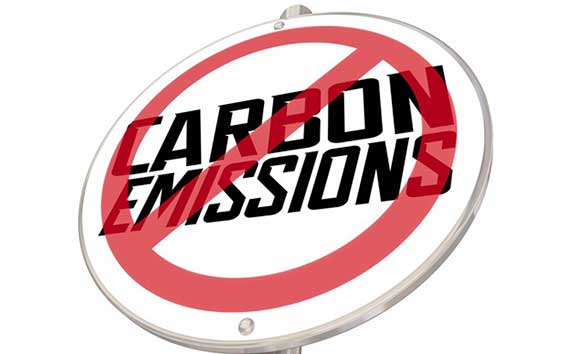As global average temperatures continue to rise, the race to net zero (the internationally agreed-upon target to achieve a balance of zero greenhouse gas emissions — or ‘GHG emissions’ for short — by 2050) is intensifying. Organisations across sectors are increasingly making more serious commitments to balance out the carbon they emit. In the world of carbon offsets and airline emissions issues, it is all about whether organisations are making serious progress toward being carbon neutral so that this target is achieved.
For carbon-intensive industries, such as air travel, companies who are dependent on fossil fuel consumption as part of their business activities, this is especially critical. (Although according to the European Union, air travel only accounts for about 4% of emissions whereas food production is responsible for around one-third, it is far more carbon-intensive, as fewer people fly than eat.)
There are two principal means available to these organisations to aim for carbon neutrality: compensating for their GHG emissions with carbon offsets and adapting their business practices to avoid emissions in the first place.
In order to help you understand which airlines are most committed to sustainability, this article will help clear up what exactly a carbon offset is and why they are essential for airlines and beyond. It will also highlight some of the other commitments airlines are making to being carbon neutral.
As we will see, it is difficult to determine exactly which airlines are the most committed to net zero. However, this article aims to help you understand how you can make the best decisions when it comes to reducing the carbon intensity of your flights and to your behaviour in general.
What Is the Relationship Between Carbon Offsets and Airline Emissions Issues?
A carbon offset is a way of compensating for GHG emissions resulting from human activities in areas such as food production and fossil fuel combustion, usually through purchasing carbon credits. Because net zero is built around reducing global emissions, organisations can buy credits in projects which draw carbon out of the atmosphere anywhere in the world. These then serve to ‘cancel out’ the emissions these organisations are responsible for.
These projects may refer to manmade forms of carbon offsetting, such as Direct Air Carbon Capture. Or they may refer to nature-based solutions, which revolve around land use change, such as reforestation, so that more CO2 is drawn out of the atmosphere than produced.
Nature-based solutions are essential because they not only draw carbon out of the atmosphere but combat existing ecological hazards like deforestation, as is occurring at an alarming rate in Brazil, for example.
An important point is that an offset refers to compensating for all forms of greenhouse gas emissions (such as methane and nitrous oxide), not only carbon dioxide emissions. They are referred to and measured in metric tons of carbon because carbon is the most common greenhouse gas and can be used as a standard to measure other emissions against.
Critically, a carbon offset is only worthwhile if it results in genuine additionality. That is to say, the offset results in there being less carbon in the atmosphere after being purchased than if it had not been. As we shall see, this is necessary when assessing whether to purchase an offset or trust in an airline’s commitments to doing so.
Historically, in order to reduce financial pressure on airlines and prevent rising prices being passed on to customers, airlines have benefitted from free carbon permits, which allow them to maintain CO2 emissions within a certain limit.
But in recent years, offsets have become more central in the fight against climate change (as outlined in a report from the Intergovernmental Panel on Climate Change (IPCC), for example). As a result, pressure is growing on governments to end this practice for airlines and to include their emissions in future carbon budgets.
When we consider that in 2019 British Airways alone produced as much CO2 emissions as every van in the U.K., such pressure is easy to understand. As such, almost all airlines have been forced to adopt ambitious carbon offsetting strategies, as the carbon toll of their activities can no longer be ignored.
But this is only one form of emissions reduction, which can also mean reducing the use of fossil fuels in the first place through the use of low-carbon alternatives via renewable energy sources and through energy efficiency more generally.
Ultimately though, the race to net zero is not only about reducing total greenhouse gas emissions and optimising energy consumption but about holistic commitment to sustainability and mitigation of all forms of activity that are harmful to our ecosystems.
Which Airlines Are Offering Carbon Offsets?
An important way to understand the relationship between carbon offsets and airline emissions issues is understanding which airlines offer offsets. Because of the inarguable need to reduce the carbon in the atmosphere, almost every airline these days offers carbon offsets in some form or another.
These may be in the form of the airline offsetting flights themselves, through offering customers the chance to do the same, or a mixture of both.
For customers, the best place to start is probably with those airlines offering offsetting programmes directly to passengers. These allow you to easily see how much carbon your flight is emitting and that you therefore need to offset. They also provide you with a means to purchase that offset through the airline’s site. Just be sure to check if they use accredited third parties (more on this below).
However, it is important to understand that not all offsets are created equal. The real question is: How do we understand which offsets create genuine additionality in terms of GHG removals?
What Are Some of the Issues Around Carbon Offsets?
One of the key issues around carbon offsets is that credits often use methodologies based around future predictions and are therefore an inexact science. In the case of a forestry project for example, the carbon it will ultimately compensate for will only be drawn down once the forest is fully grown.
Another persistent issue revolves around inconsistencies in accounting practices such as ‘double counting,’ where an offset’s carbon mitigation is counted twice, both by the purchaser and the seller of the offset.
Although the world of offsets is complex, there are certain indications that you can look for when determining whether an offset is worth purchasing or not.
Perhaps the most important of these for individuals is whether or not an offsetting project is certified by an officially and internationally recognised body, such as Verra or the Gold Standard, because they are able to conduct the thorough research the individual doesn’t have time for. However, even these bodies are subject to error and there is no substitute for conducting one’s own research.
So, you should look at which partner organisation an airline is using for their offsets, and check if they are accredited. It is probably a red flag if the airline is not using a partner at all and conducting their offsets themselves, as this makes accountability low.
While research can be time-intensive, it will be made easier the more transparent a carbon offsetting organisation makes its practices. This could mean allowing customers to assess the carbon mitigation of projects in real time, such as by:
- Using AI-facilitated analysis of offset sites
- Releasing company accounts to make it clear where exactly money is being spent
- Publishing detailed explanations on their methodology for choosing different projects
For these reasons, you should also be wary if the cost of the offset is too low, which may prove a false economy. While we all want to save money, offsets should be expensive enough where they genuinely disincentivise carbon production in the first place. And they also need to be expensive enough to ensure sufficient rigour has been applied by the offsetting organisation in maintaining the standards outlined above.
What Are Some Other Means of Emissions Reduction Available to Airlines?
Of course, due to the complexities of ensuring carbon emissions are actually compensated for, it is better to avoid emissions in the first place wherever possible.
Although emissions are an inherent part of an airline’s activities, there is a range of steps available that can be taken.
One of the easiest means of mitigation available to airlines is through the use of cleaner fuels, sources such as sustainable aviation fuel (SAF). SAF is made from sustainable fuel sources in the form of biomass, such as agricultural and forestry residues and various oils used for food.
SAF can reduce emissions by up to 80% and is vital to reduce emissions as much as possible currently.
However, far more efficient fuels are currently being developed. The European Union has unveiled plans to achieve hydrogen-powered air travel by 2035. The great advantage of hydrogen power over SAF is that, rather than harmful pollutants such as nitrous oxides, the only by-product of green hydrogen is water.
Airlines may also invest in lighter aircraft, taking everything into account from the engineering of the craft itself, to reducing weight load through using digital manuals and magazines on board and using lightweight food and drinks trolleys.
Finally, airlines can also improve energy efficiency through looking at other areas of their business, from improving energy use in their offices to more interactive solutions — such as supporting their employees in reducing their CO2 emissions when travelling to work.
Which Airlines Are the Biggest Carbon Emitters in the U.K.?
Because so much offsetting depends on results that will not be visible in the near future, the main criteria upon which we can assess airlines are related to pledges and commitments. Therefore, they’re hard to analyse. It is important, therefore, to check not only the commitments that these organisations have made but also their progress against these commitments so far.
Even this doesn’t tell the whole picture though, because often the biggest emitters are the ones who are obliged to make the biggest commitments. British Airways, Easyjet, and Virgin Atlantic were all identified among the worst emitters in Europe. While all of them have detailed policies on their websites as to how they will go about becoming carbon neutral, a 2019 report from LSE indicated that Easyjet were doing the most to actually meet these commitments.
However, in the report, emissions are calculated per capita — i.e., the total CO2 emissions of a flight divided by the total number of passengers. According to BBC News, “This means EasyJet can improve its per capita performance by stuffing planes with cut-price ticket-holders, thereby potentially encouraging a new generation of frequent flyers.”
Which Airlines are Closest to Carbon Neutral?
As can be seen, the answer is not straightforward. Different airlines make different claims, and there are various ways of assessing both their own emissions and the carbon offsets they are using.
One interesting and simple tool offered by Lufthansa and some of its affiliated airlines is a carbon neutral booking tool. This allows customers to ensure their flight is carbon neutral through a mixture of offsetting and carbon mitigation strategies, such as those discussed above.
This indicates an important point. As things stand, when considering how to reduce your own carbon footprint, the most reliable approach is through doing your research and purchasing offsets yourself, rather than going by the claims made by airlines directly.
So, Which Offsets Should I Buy, and Which Airlines Should I Fly?
As far as carbon offsets and airline emissions issues are concerned, we’ve seen that it’s complicated.
However, though it may be time intensive, there are relatively straightforward criteria you can follow when purchasing offsets. Ensure the scheme is accredited and transparent, and be wary of anything too cheap.
Regarding which airline to choose, make sure that they offer an offsetting package that is easy to follow. They should indicate how they are ensuring the offsets are genuine through following the criteria above.
If they are already taking steps to offset their own flights and exploring carbon mitigation strategies, so much the better. But in terms of taking responsibility for your own emissions, it’s really down to what you can do to ensure the emissions of the flight you take are compensated for.
Even if your flight doesn’t offer carbon offsets, you can still offset your travel on your own with Terrapass. You can check out the commitments Terrapass is making toward ensuring genuine additionality of their carbon offsets and how you can offset your flights and carbon footprint more generally.
Brought to you by terrapass.com
Featured image:












